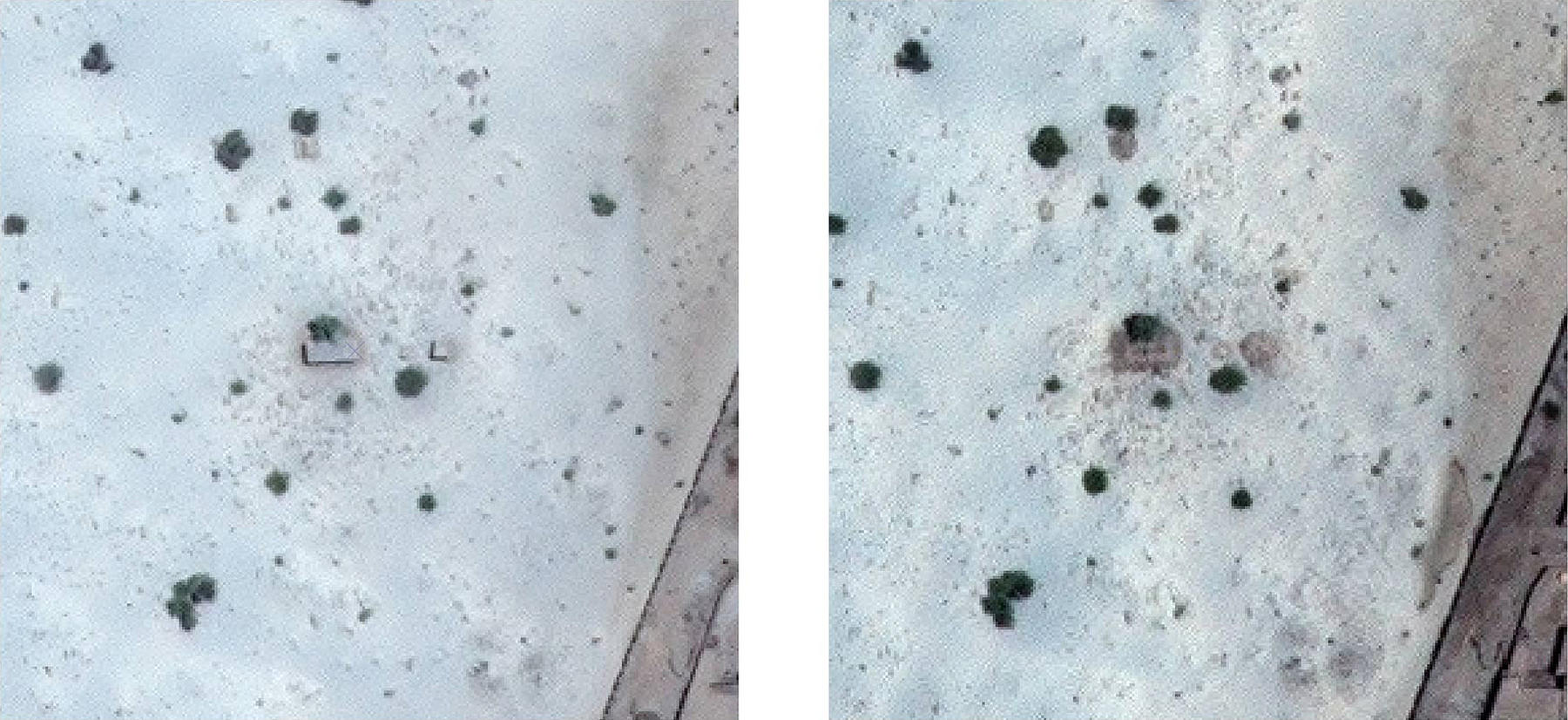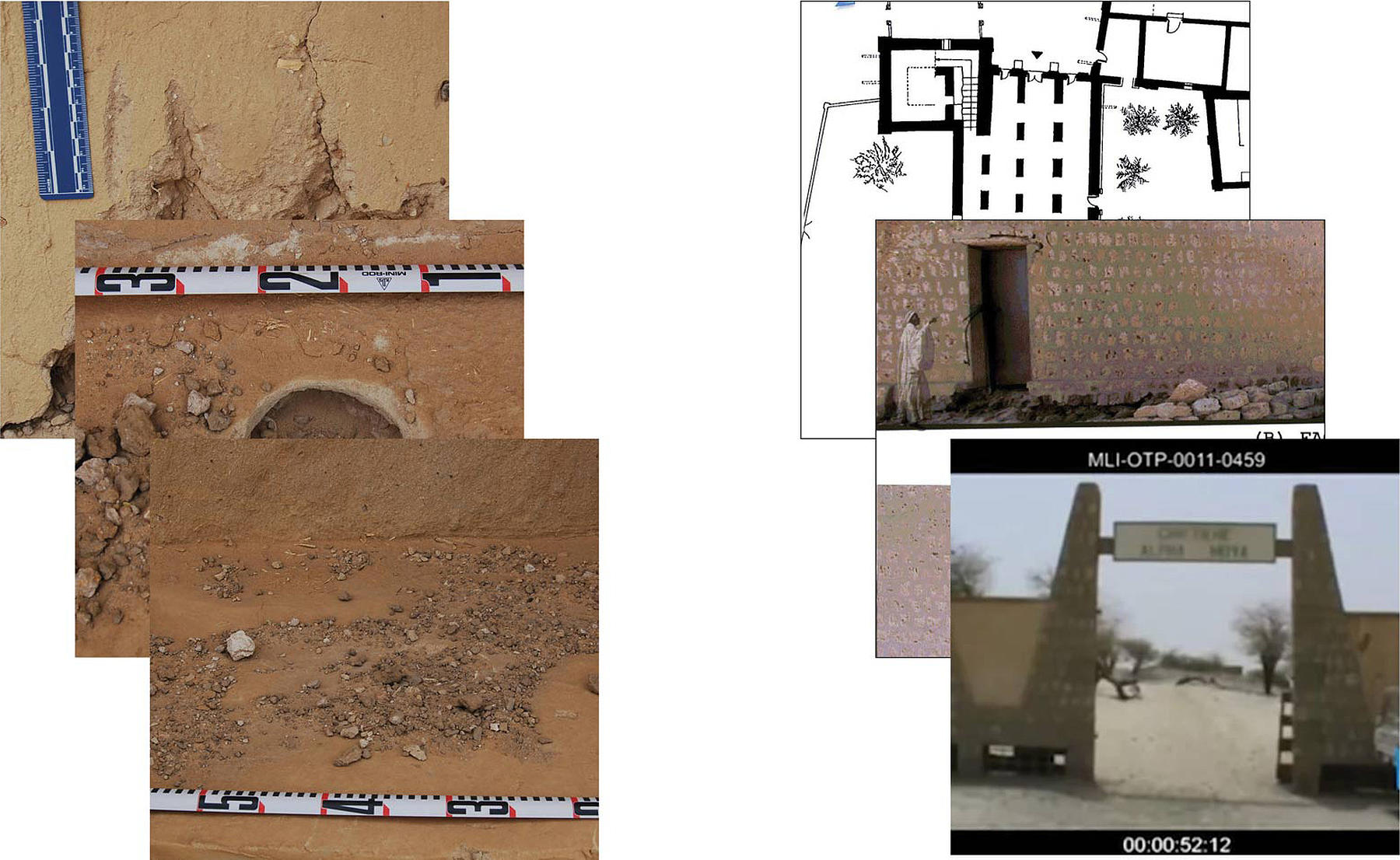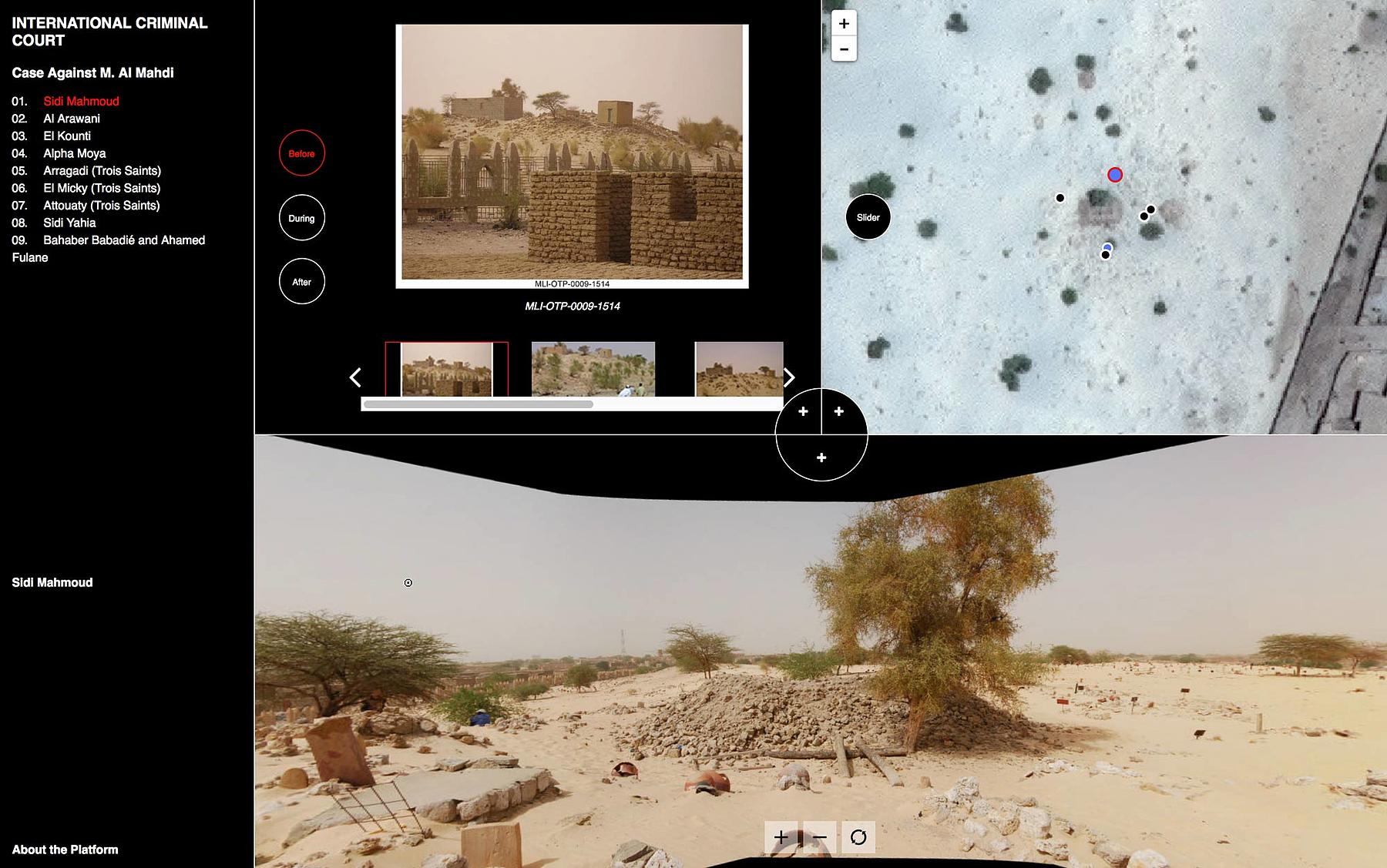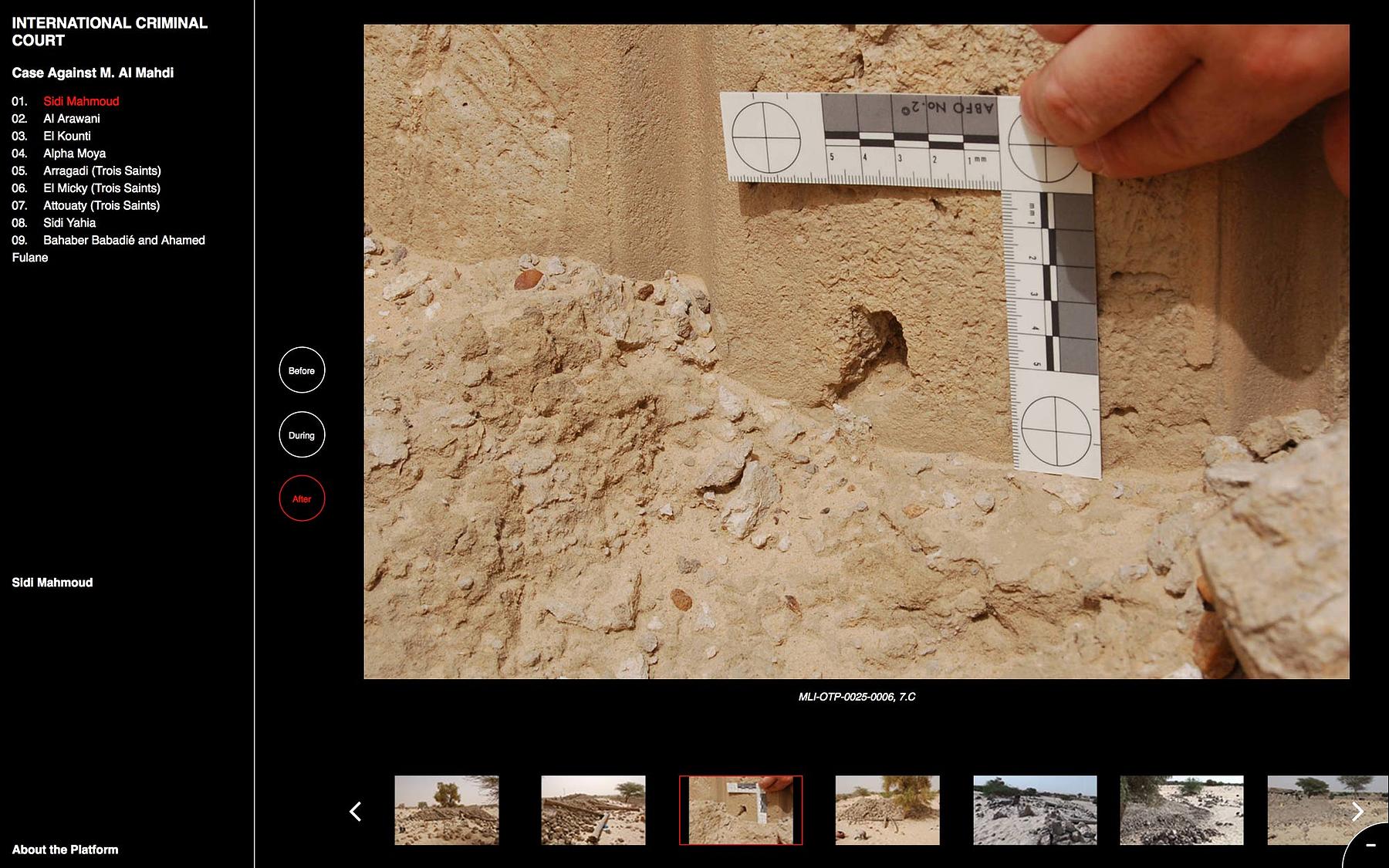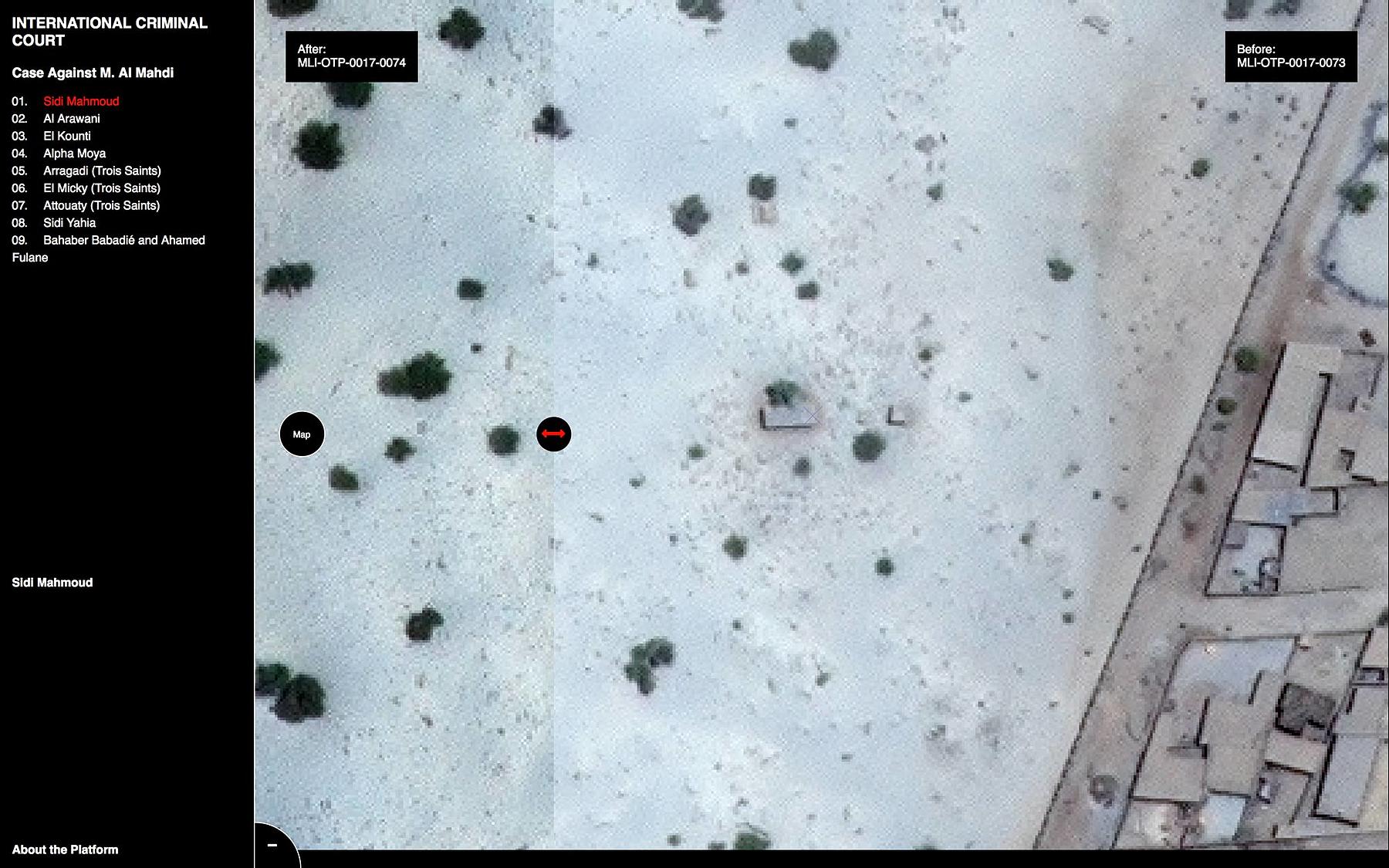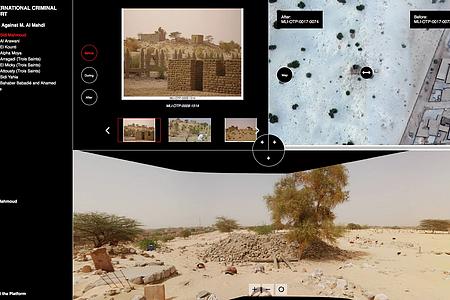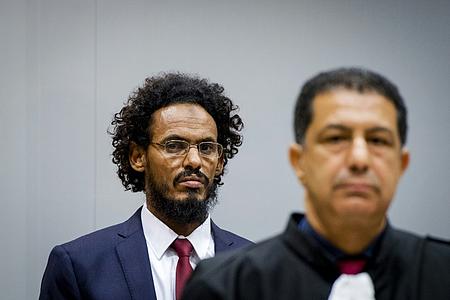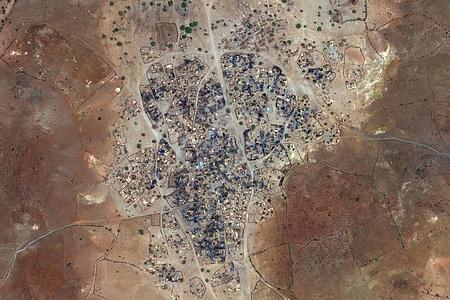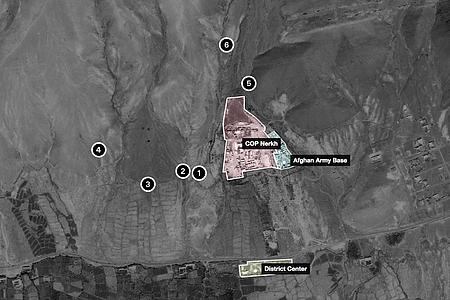ICC Digital Platform: Timbuktu, Mali
Tasked with designing a tool for the presentation of evidence at the International Criminal Court, SITU Research developed new means of engaging with visual and spatial information in the courtroom.
Explore the platform here:
http://icc-mali.situplatform.com
Client
International Criminal Court, Office of the Prosecutor
Location
Timbuktu, Mali
Completion
2016
Created in collaboration with the International Criminal Court’s Office of the Prosecutor, this interactive digital platform was designed to facilitate the organization, analysis, and presentation of evidence documenting the destruction of sites of cultural heritage in Timbuktu, Mali. Combining geospatial information, historic satellite imagery, photographs, open source videos, and other forms of site documentation, the tool was used as part of trial proceedings against the defendant, Mr Ahmad Al Faqi Al Mahdi, an alleged member of the armed group Ansar Dine, who was charged with participating in the intentional destruction of nine mausoleums and a mosque’s door in 2012. This is the first time such a tool was used in the International Criminal Court and presents a visual and spatial evidentiary model for cases where sites of heritage were damaged or destroyed.
The platform allows the user to explore information related to six separate sites across Timbuktu, each with material organized into before, during and after destruction. Once a site is selected, all of the attendant information can be easily accessed and viewed either simultaneously or as independent articles. With over 200 assets, the platform’s ultimate function is to provide an intuitive yet comprehensive spatial and temporal account documenting the attacks against these structures.
In line with its enhanced focus on the use of technology in presenting its cases in court, the Office of the Prosecutor of the ICC worked closely with SITU on the development of this tool over a four-month period. The work focused on the development of this tool for use in the courtroom and, specifically, as a resource to be used during the trial of Al Mahdi. The development of this tool represents a move towards new and increasing applications of digital technologies in judicial proceedings aimed at bringing accountability for atrocity crimes.
The platform design is centered around three portals. On the upper left is a media gallery with documentation of the site before, during, and after destruction. Evidence displayed here is a combination of photographs and videos taken by citizens and journalists. Drawings of the sites are also featured. On the upper right there is a map with points representing each of the sites. This portal allows the user to see the distribution of all of the destroyed sites as well as the scale of the systematic destruction of the mausoleums. For each site there is also a slider which allows the user to toggle between satellite imagery of the site before and after destruction. The bottom portal is a view of the panoramic images that the special response unit from the International Criminal Court captured at each site. The orientation of this part of the platform is designed specifically to facilitate viewing of the panoramas.
This work was undertaken by the Spatial Practice as Evidence and Advocacy (SPEA) project and was funded by the John D. and Catherine T. MacArthur and Oak Foundations.


